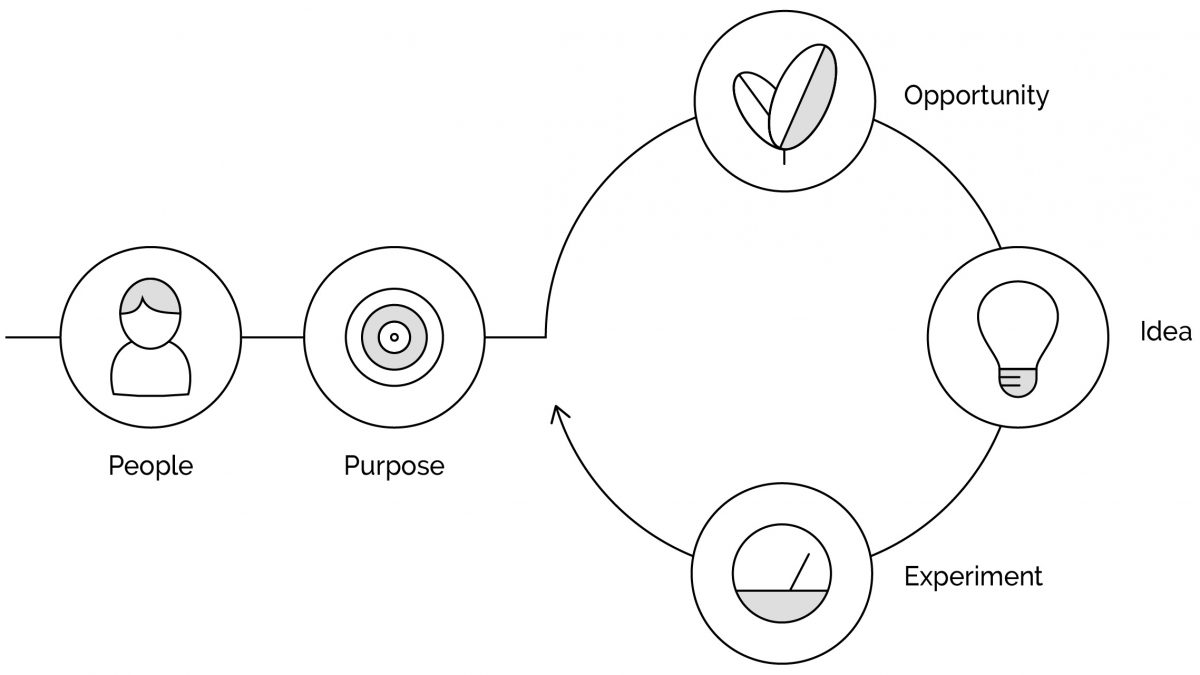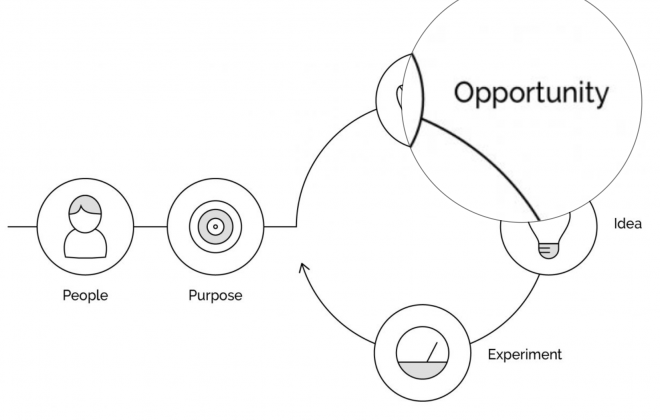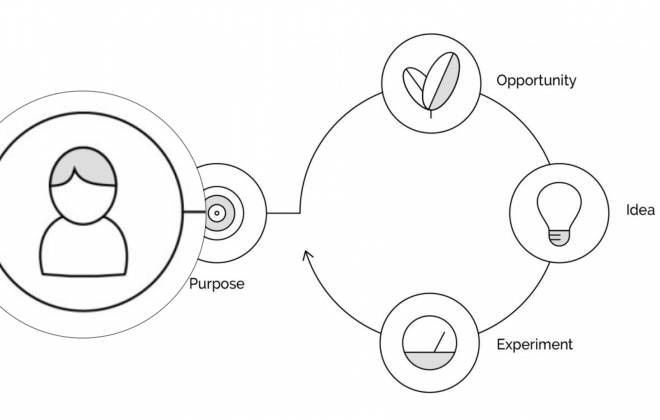The inter connection of the LSD Canvases
The LSD Canvases represent a service design process, and aim to enable you to transfer work results from one canvas to the next and deepen them in detail. This structure is one of the key strengths of Lean Service Design. We will now take a look at how it works.
Let’s start with the persona canvas. You will have to deal with your users and stakeholders at the beginning of your project. In order to develop meaningful services and products, you need to think about their values, needs and problems. On the Persona Canvas you have a field for each of these dimensions, marked with a corresponding icon. The “plus” for motivators or needs and goals, the “minus” for problems and fears and the heart icon for the values. This visual identification runs across all canvases.
In the next step you can transfer the most important personas (customer and business) to the purpose canvas and refine or extend them in detail. You only have to stick to the visual coding. Now you can define your product vision (purpose).
In the next step you can now transfer and refine the needs, goals and paints along the Experience Flow. What you have considered as general goals and problems so far will now be placed on the timeline of the Customer Journey and get the necessary context. The values from the persona-canvas determine to a large extent the moment of truth, i.e. the decisive emotional and cognitive moment from the customer’s perspective. You can also use the icons for orientation here. As the goal of the Experience Flow, you and your team identify opportunities – i.e. fields of action – throughout the entire journey. You should compare these opportunities with the vision on the purpose canvas.
The opportunities on the Experience Flow Canvas form the framework for new service and product ideas. Every idea you generate with the team is checked and evaluated against the needs, goals and problems on the Purpose Canvas or the individual Persona Canvases. This allows you to prioritize your ideas and only pursue the most promising ones.
Each idea is based on a set of assumptions, which you should write down accordingly on each idea canvas. You then transfer these assumptions to the Experiment Board, where you will work out how you want to test and verify each assumption.
The icons in the individual fields of the canvases are a reference system that shows you which contents belong together, can be filed or checked against each other. As you can see, Lean Service Design is intuitive, structured and reduced to the essentials, so that you can move forward with your projects.



